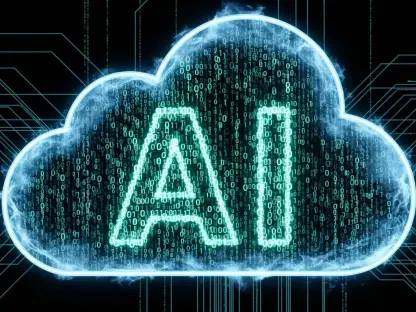As technology continues to evolve, the increasing integration of artificial intelligence across various sectors has brought forth a new set of security challenges. This phenomenon underlines the importance of AI security solutions, which are pivotal in safeguarding these intricate ecosystems. By addressing vulnerabilities unique to AI, these solutions ensure operational integrity while allowing organizations to innovate safely.
A New Era in Cybersecurity
AI security solutions have emerged as a cornerstone of modern cybersecurity frameworks, offering protection across the entire AI lifecycle. Their core principles lie in monitoring, safeguarding, and optimizing AI systems to detect and prevent potential threats. These innovations stem from the necessity to adapt traditional security measures, which fall short in addressing the distinctive complexities of AI-driven environments. Within the broader technological landscape, AI security stands as a testament to our ability to secure increasingly autonomous systems in critical domains.
Critical Elements of AI Security
Model Scanning: Strengthening the Core
AI model scanning plays a fundamental role in AI security by diligently analyzing and verifying AI models for potential weaknesses or threats. This component ensures the integrity of AI deployments by checking for anomalies or malicious inputs that could compromise the system. It stands out for its efficiency and ability to keep pace with evolving threats, showcasing its significance in maintaining robust AI operations.
Posture Management: The Guardian of AI Systems
AI posture management focuses on maintaining and enhancing the security posture of AI environments. This element allows organizations to assess and rectify vulnerabilities in their AI infrastructure dynamically. By proactively adjusting policies and configurations, posture management helps mitigate risks, ensuring seamless integration into various applications. Its real-world efficacy is seen in industries where rapid adaptation to regulatory and operational changes is essential.
Runtime Protection: Safeguarding Active Operations
Another critical aspect of AI security is runtime protection, which focuses on actively defending AI systems when they are operational. This feature ensures that AI models function securely and reliably by intercepting threats during runtime. Its impact is profound, as it allows for real-time threat mitigation, ensuring continuous protection against potential exploits or breaches.
Red Teaming: Uncovering Hidden Vulnerabilities
AI red teaming simulates potential adversarial tactics to uncover vulnerabilities within AI systems before they manifest in real-world scenarios. By stress-testing AI environments through simulation of malicious actions, this strategic component identifies weaknesses that need addressing. Its role in strengthening AI security frameworks is invaluable, ensuring systems remain fortified against unforeseen threats.
Pioneering Advancements and Emerging Trends
Recent advancements in AI security have introduced innovative methodologies and tools that enhance the resilience of AI systems. New strategies and solutions are being developed to address overlooked vulnerabilities, such as data poisoning or adversarial attacks. These innovations are fueled by an increasing demand for comprehensive AI security measures, prompted by shifting consumer and industry behaviors prioritizing enhanced protection. As AI adoption grows, these trends are expected to significantly shape the trajectory of AI security solutions.
Practical Applications Demonstrated
The practical application of AI security solutions is evident across various industries, including finance, healthcare, and retail. Each sector leverages these solutions to protect sensitive data and streamline operations, thus fostering an environment conducive to innovation. Unique use cases include adaptive security mechanisms tailored to industry-specific requirements, showcasing the versatility and effectiveness of AI security in diverse settings.
Overcoming Challenges and Facing Limitations
Despite their capabilities, AI security solutions encounter several challenges that hinder their widespread adoption and effectiveness. Technical complexities, regulatory compliance hurdles, and market barriers pose significant obstacles. However, continuous development efforts focus on overcoming these limitations by introducing more scalable and flexible solutions that are better equipped to navigate regulatory and technical landscapes.
Envisioning the Future Landscape
Looking ahead, AI security solutions are poised to become more integral to securing AI ecosystems. Future developments may lead to breakthroughs that enable seamless integration across AI platforms, fostering an ecosystem where security is inherently embedded within AI operations. The long-term impact of these advancements is likely to be transformative, ensuring AI’s secure and trustworthy evolution within society.
Concluding Insights
These AI security solutions mark a pivotal evolution in the cybersecurity landscape, addressing the unprecedented challenges posed by AI’s rise. Through sophisticated features like model scanning and runtime protection, they fortify the defenses of numerous industries against emerging threats. As they overcome limitations and envision new horizons, these solutions set the stage for a future where AI will be both innovative and secure. Thus, the journey towards AI security is not merely a response to technology’s evolution but also a proactive stride into a more secure digital era.









